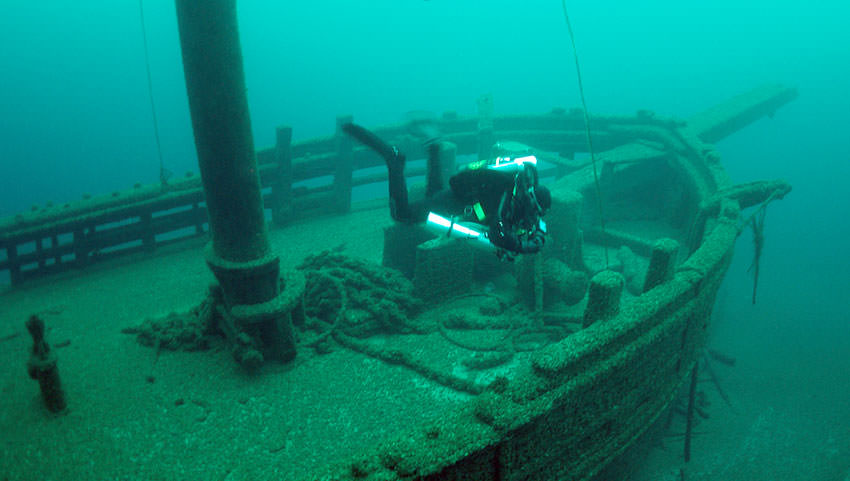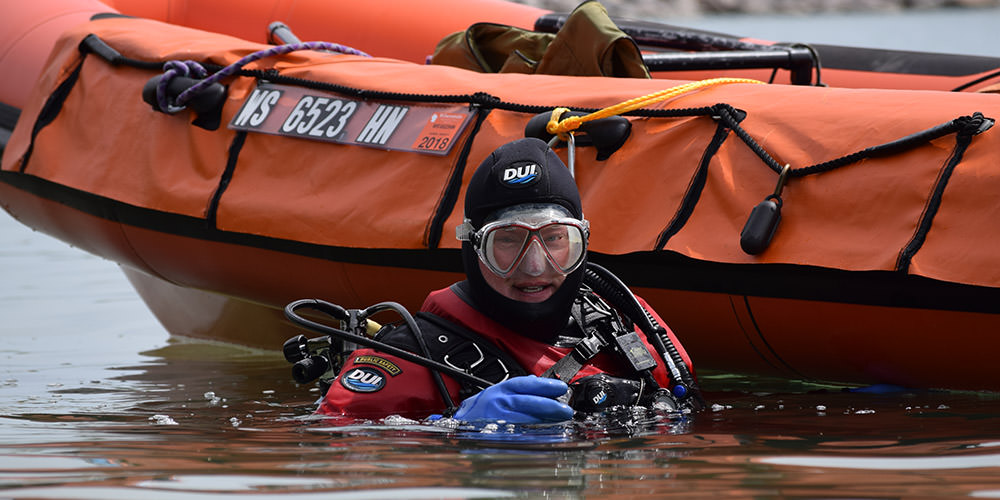A Maritime Economy Past and Present: Socioeconomics of the Proposed Wisconsin - Lake Michigan National Marine Sanctuary National Marine Sanctuary
By Megan Howes
February 2017

For decades, the people of Wisconsin have strived to study, preserve, and interpret their Great Lakes shipwrecks and maritime heritage. In December 2014, Governor Scott Walker took steps to bring federal resources to expand on their efforts. With endorsement from diverse stakeholders and broad community support, an area of Lake Michigan was nominated to become a national marine sanctuary. In coordination with existing museums, trails, and dive sites, the state of Wisconsin and NOAA anticipate that a sanctuary will develop the regional economy while fostering partnerships for education and research.
A new report examines the social and economic dimensions of resource management related to the proposed Wisconsin - Lake Michigan site, and supports the conclusion that establishment of a sanctuary is likely to have a direct, long-term, beneficial impact on communities beyond the sanctuary boundaries. This report serves a companion piece to the draft environmental impact statement, which is now on the Federal Register and open for public comment through March 31.

The Wisconsin Study Area Profile 2000 to 2014 provides detailed economic and demographic information on counties that would likely notice effects of a new sanctuary. Indicators like population density, major industries, and rates of employment and economic growth are described. The report outlines the current use of relevant natural and cultural resources, using data on tourism, recreational fishing, and public attractions. In the case of Wisconsin - Lake Michigan, recreational and historical resources are directly related to the vitality and development of the regional economy.
Tourism is a leading and growing industry in the state of Wisconsin, with a $19.3 billion dollar impact in 2015, and has demonstrated potential to be strengthened at the local level by NOAA partnerships for enhanced outreach and public access. Last summer, Wisconsin shoreline communities joined NOAA's national "Get Into Your Sanctuary" celebration by providing activities such as shipwreck geocaching, kayak tours, and biking on the maritime trail. In keeping with a long-standing and evolving maritime economy, the recent opening of a Port Washington dive shop is in part due to expectations of economic growth from a new sanctuary.
NOAA is looking forward to the possibility of adding this Great Lakes site to better include Midwestern communities in the National Marine Sanctuary System and to strengthen the national collaboration that makes the sanctuary system so effective. A Wisconsin - Lake Michigan National Marine Sanctuary would join the ranks of 13 other national marine sanctuaries and counting, helping NOAA and the United States to further promote stewardship of our blue planet.

